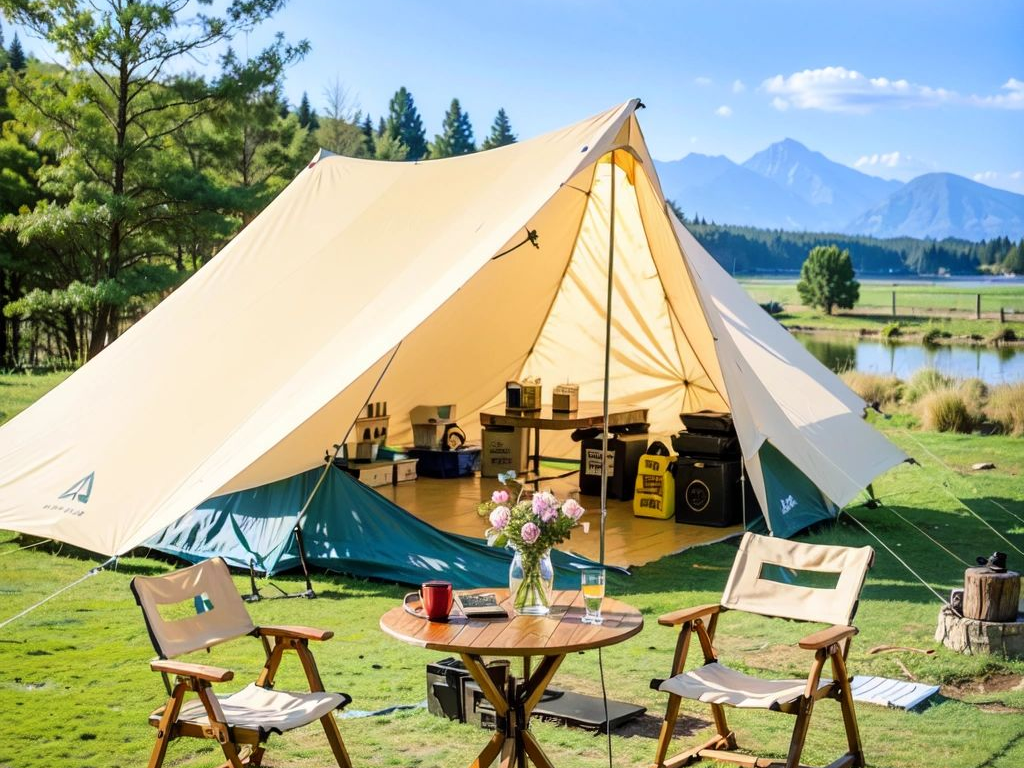
Top 10 Things to Know Before Camping in Australia: A Guide to Safety, Sustainability, and Wilderness Etiquette!
Australia's vast natural landscapes are a camper's paradise—from rainforests to deserts, coastlines to outback, every campground offers a unique adventure. However, the continent's unique ecosystems and climate also pose some challenges. Whether you're a first-time backpacker or a seasoned local adventurer, these 10 practical tips will help you camp in Australia more safely and comfortably!
1. Research the Weather and Seasons
Australia's weather is diverse and varies greatly between north and south.
- Seasonal Flip: When it's summer in the Northern Hemisphere, it's winter (June-August) in Australia, with warm, dry winters in tropical northern regions (like Queensland), but potentially cold and wet in the south (like Tasmania).
- Extreme Weather Alerts: Summer (December-February) temperatures can exceed 40°C in the outback; stay hydrated to avoid heatstroke; tropical cyclones or flooding are possible in the north during the wet season.
Action Plan: Check the Bureau of Meteorology (BOM) for real-time forecasts before you go, and avoid high-risk weather.
2. Choose Legal Campsites and Book in Advance
Camping is prohibited in many national parks and reserves in Australia, with hefty fines for breaking the rules.
- Free vs. Paid: Remote areas may offer free camping (like designated Rest Areas), but popular spots (e.g., Great Ocean Road, Uluru) require bookings through the Parks Australia website, sometimes months in advance.
- Facility Check: Confirm if your site has drinking water, toilets, and fire pits (many areas have fire bans).
Handy Tool: Download the WikiCamps app for real-time campground details.
3. Coexist with Wildlife
While Australia is home to venomous snakes, spiders, crocodiles, and kangaroos, staying alert is key.
- Food Management: Store all food in animal-proof containers to avoid attracting possums, dingoes, or even foxes.
- Safe Distance: If you encounter a snake, back away slowly; stay out of the water in northern areas (like Kakadu National Park) to avoid crocodiles.
Fun Fact: Most spiders in Australia are not deadly; apply an ice pack and seek medical attention if bitten.
4. Fire Safety: A Top Priority
Bushfires pose a serious threat in Australia, particularly during the dry season.
- Campfire Rules: Only light a fire in designated fire pits when permitted, and extinguish it thoroughly (drown with water) before leaving.
- Vehicle Hazard: Never park on dry grass, as hot exhaust pipes can ignite vegetation.
Emergency Plan: If you encounter a bushfire, call 000 immediately and follow evacuation instructions.
5. Camp Sustainably: Leave No Trace
Australians take environmental conservation seriously—follow the "Leave No Trace" principles.
- Waste Management: Pack out all rubbish (including biodegradable peels) and use reusable utensils.
- Protect Vegetation: Avoid cutting branches for firewood; use dedicated campfire wood (available at supermarkets).
Tip: Opt for biodegradable toiletries to reduce water pollution.
6. Water Safety: Don't Drink from the Creek
Crystals streams might look pristine, but they could contain parasites or chemical contaminants.
- Purification Methods: Boil water for at least 1 minute, or use a water filter/purification tablets.
- Water Supply: In the desert, allow 3 liters of water per person per day; carry extra in a jerrycan in your vehicle.
7. Gear Essentials: Expect Temperature Extremes
- Clothing: Pack a down jacket for winter in the south, and sun-protective clothing and a wide-brimmed hat for summer in the outback.
- Sleep System: Opt for a sleeping bag rated to 0°C and a sleeping mat to handle cold nights.
- Lighting: Bring a headlamp and spare batteries (avoid using the blue-light mode, as it attracts insects).
Must-Have: Fly net (outback flies can be relentless in summer)!
8. No Phone Signal? Prepare for Emergencies
Remote areas (e.g., Western Australia's Nullarbor Plain) can have no reception for days.
- Communication Devices: Consider renting a satellite phone or an EPIRB (Emergency Position Indicating Radio Beacon).
- Inform Others: Share your itinerary with loved ones, and sign in at hiker logs in national parks.
First-Aid Kit: Include a snake bite bandage, pain relievers, antiseptic, and emergency contact details.
9. Respect Aboriginal Culture and Country
Many camping areas fall within the traditional lands of Aboriginal people, so extra care is needed.
- Permit System: Permits are required to enter some areas in the Northern Territory (e.g., Arnhem Land).
- Cultural Sensitivity: Avoid photographing sacred rocks or artifacts unless explicitly permitted.
Learning Opportunity: Join a guided cultural tour with an Aboriginal guide to gain insights into the stories of the land.
10. Campsite Etiquette: Quiet Enjoyment and Sharing
Campgrounds in Australia often involve sharing space with fellow travelers.
- Noise Control: Most campgrounds have quiet hours after 10 pm; use headphones for music.
- Pet Restrictions: Dogs are generally prohibited in national parks; check with private campgrounds.
Bonus Treat: The Southern Hemisphere night skies are breathtaking! Download the Star Walk 2 app to identify the Milky Way and the Southern Cross.
The Australian wilderness is as beautiful as it is unforgiving; preparing adequately will allow you to immerse yourself in its splendor. Remember, safety is paramount, and respecting the environment is every traveler's responsibility. Pitch your tent, light a campfire (if permitted), and let the stars of this ancient land tell you stories that span eons.
May your camping adventures in Australia become the stories of a lifetime! 🌿🏕️️
